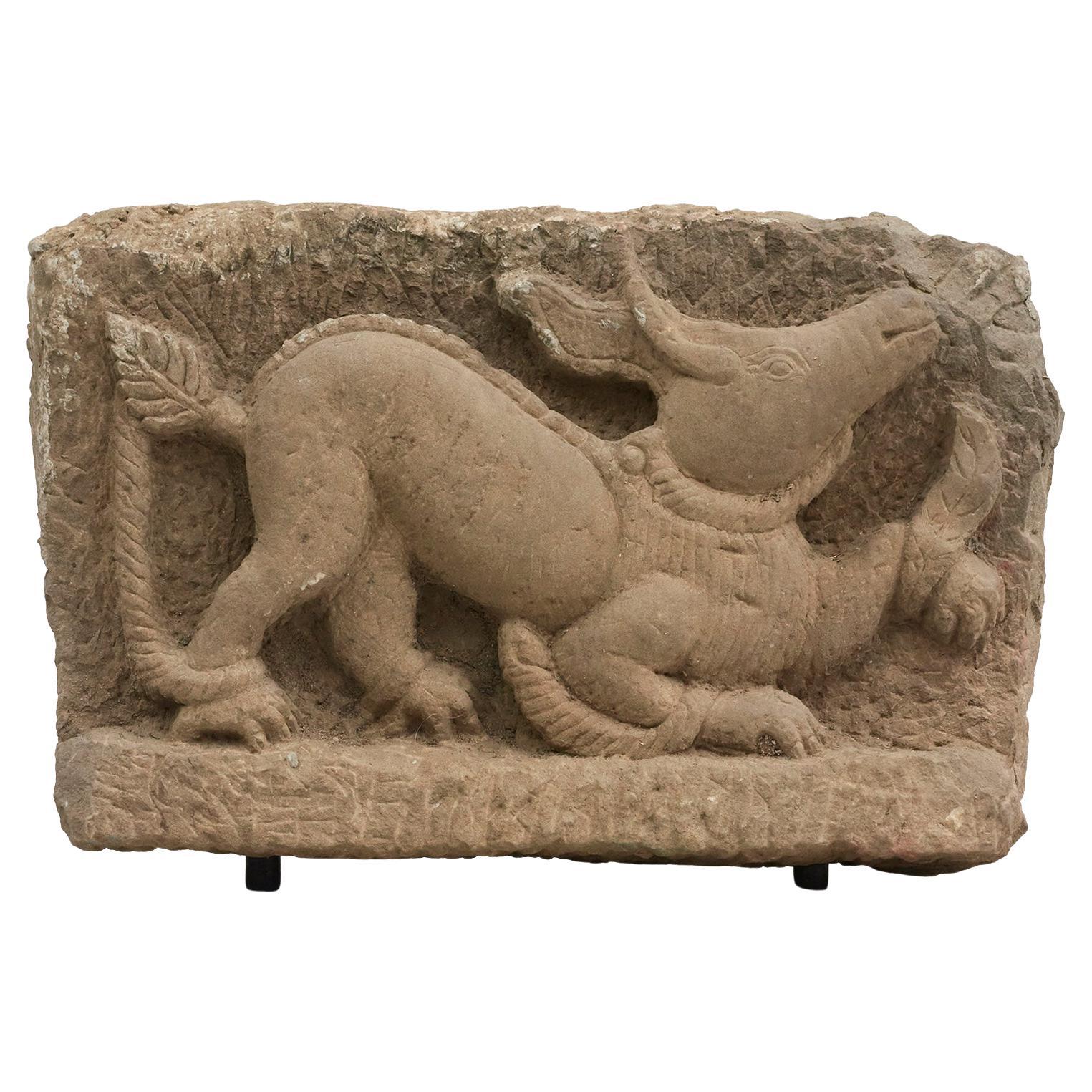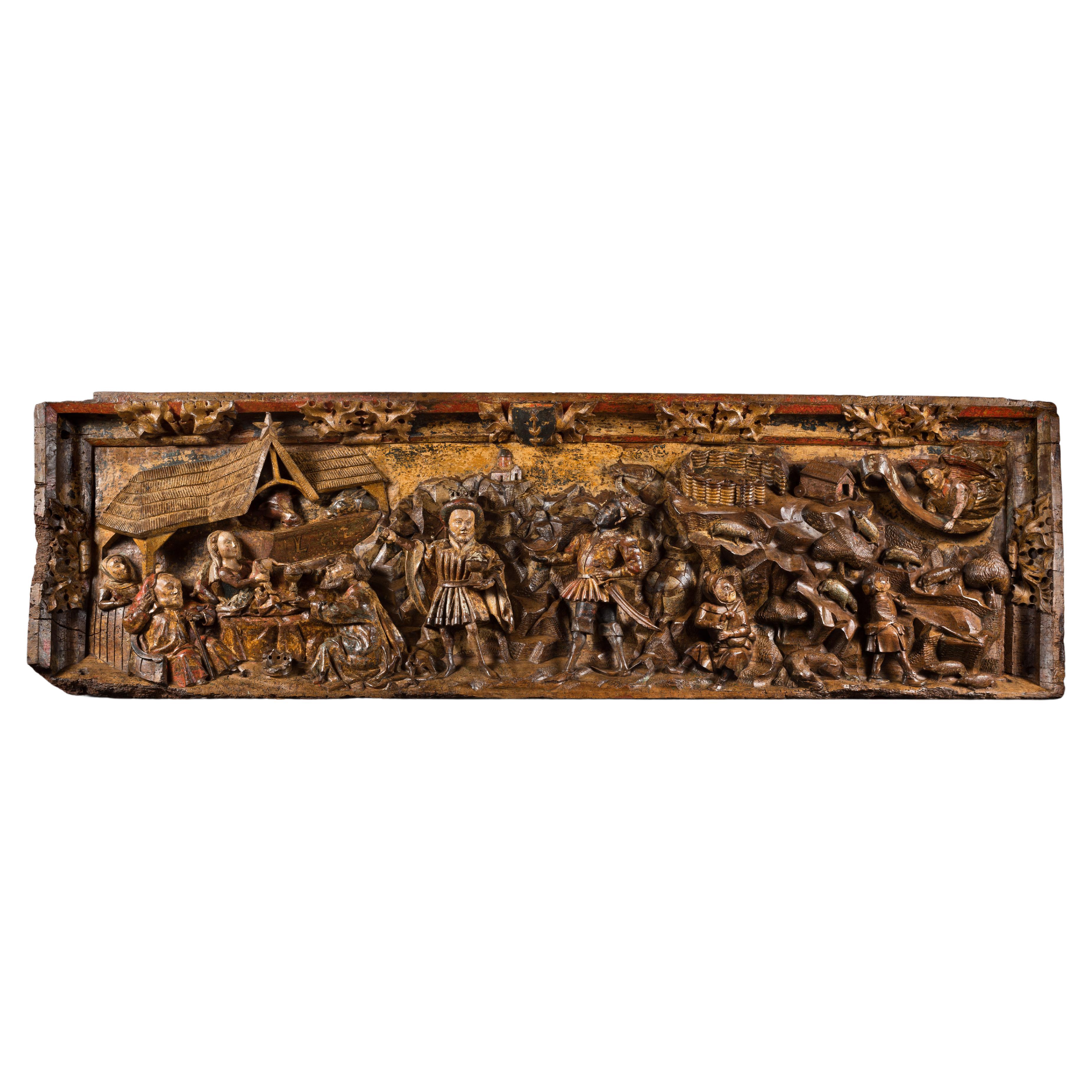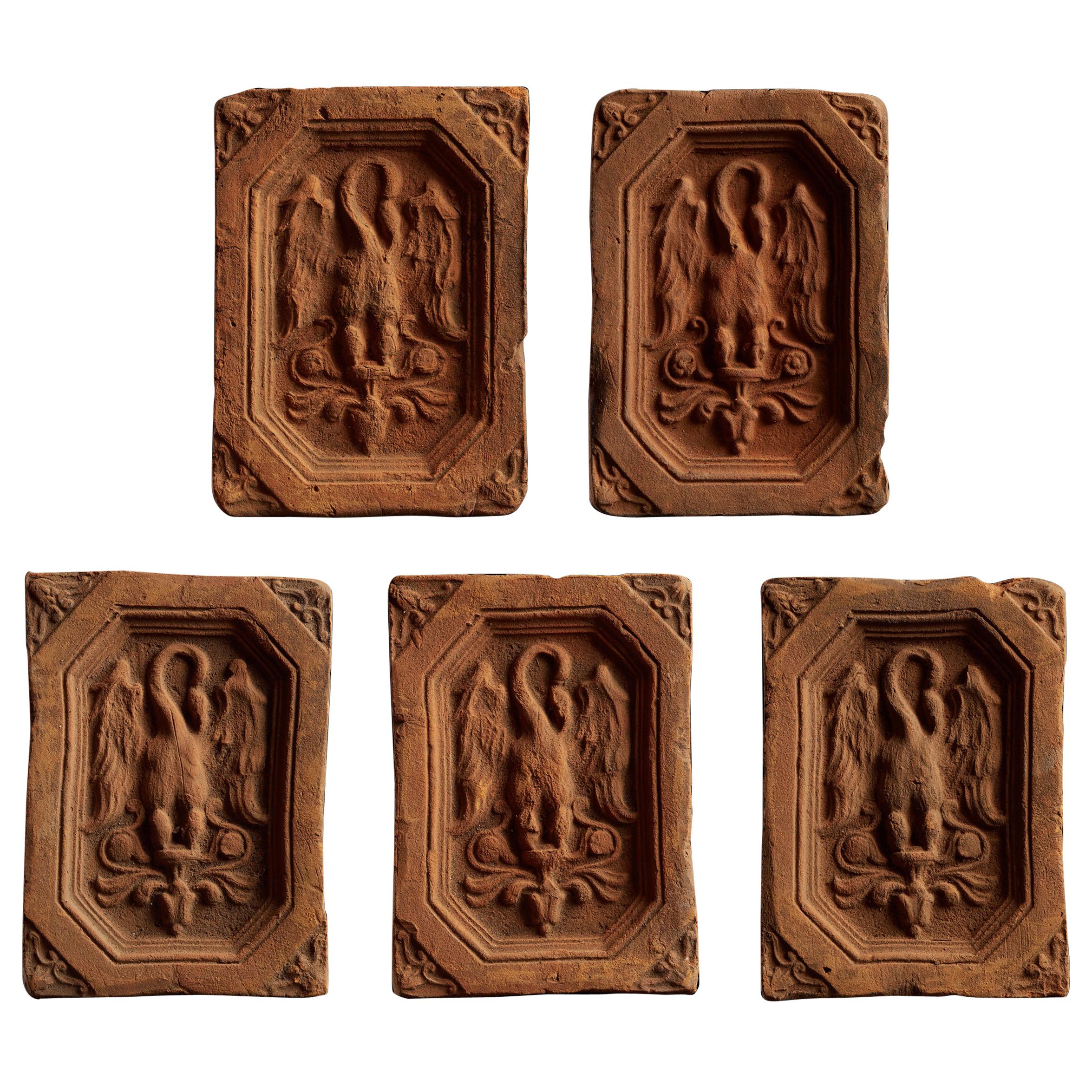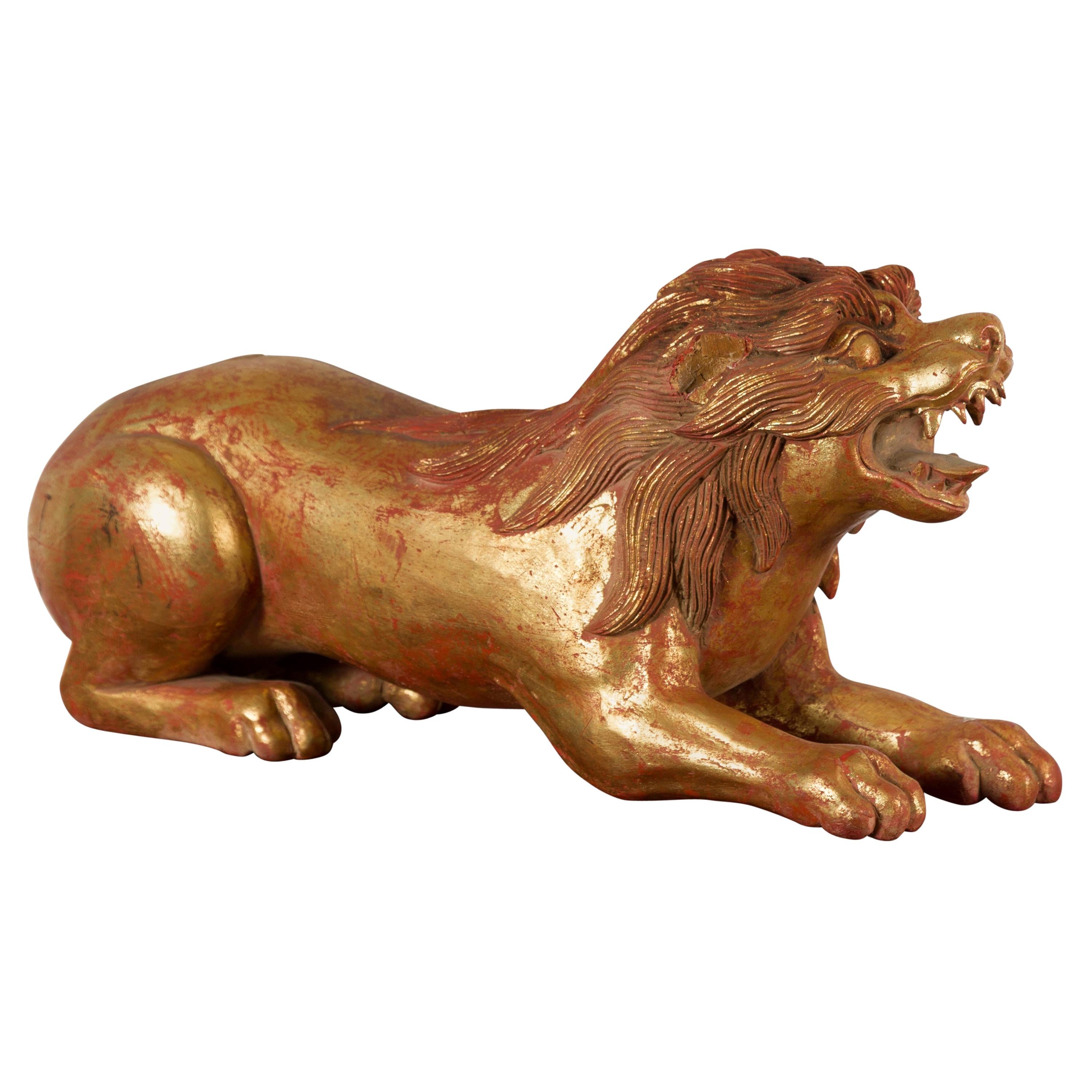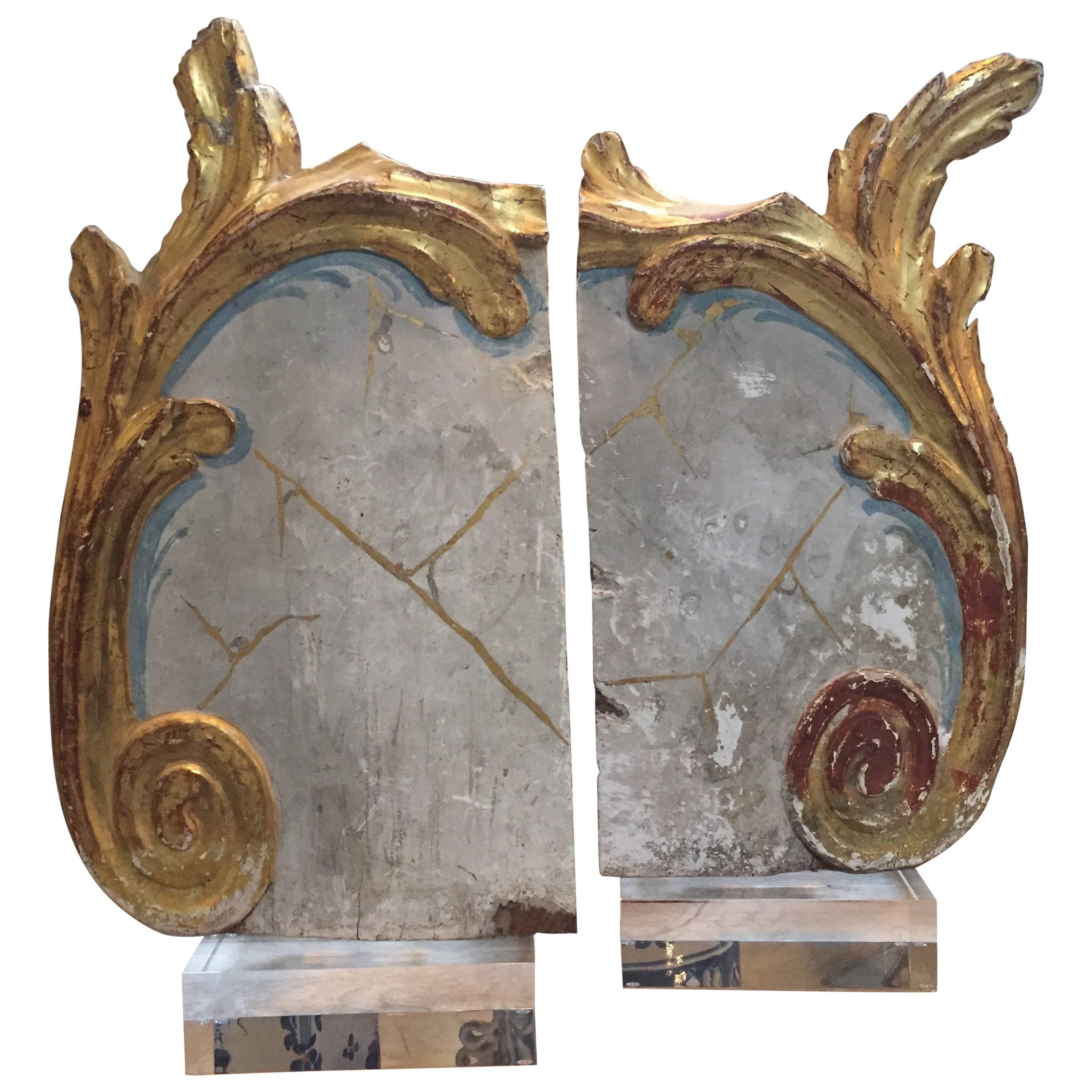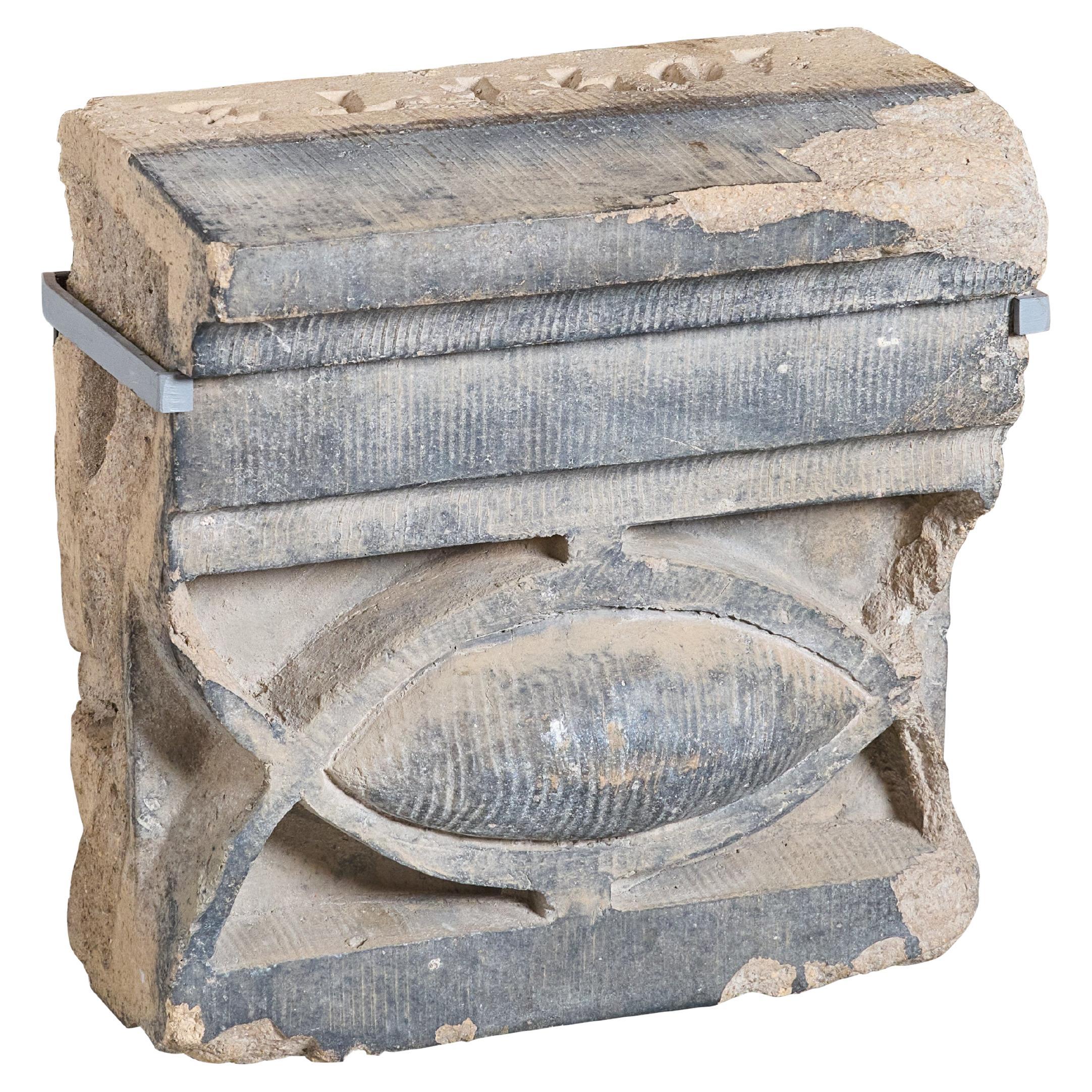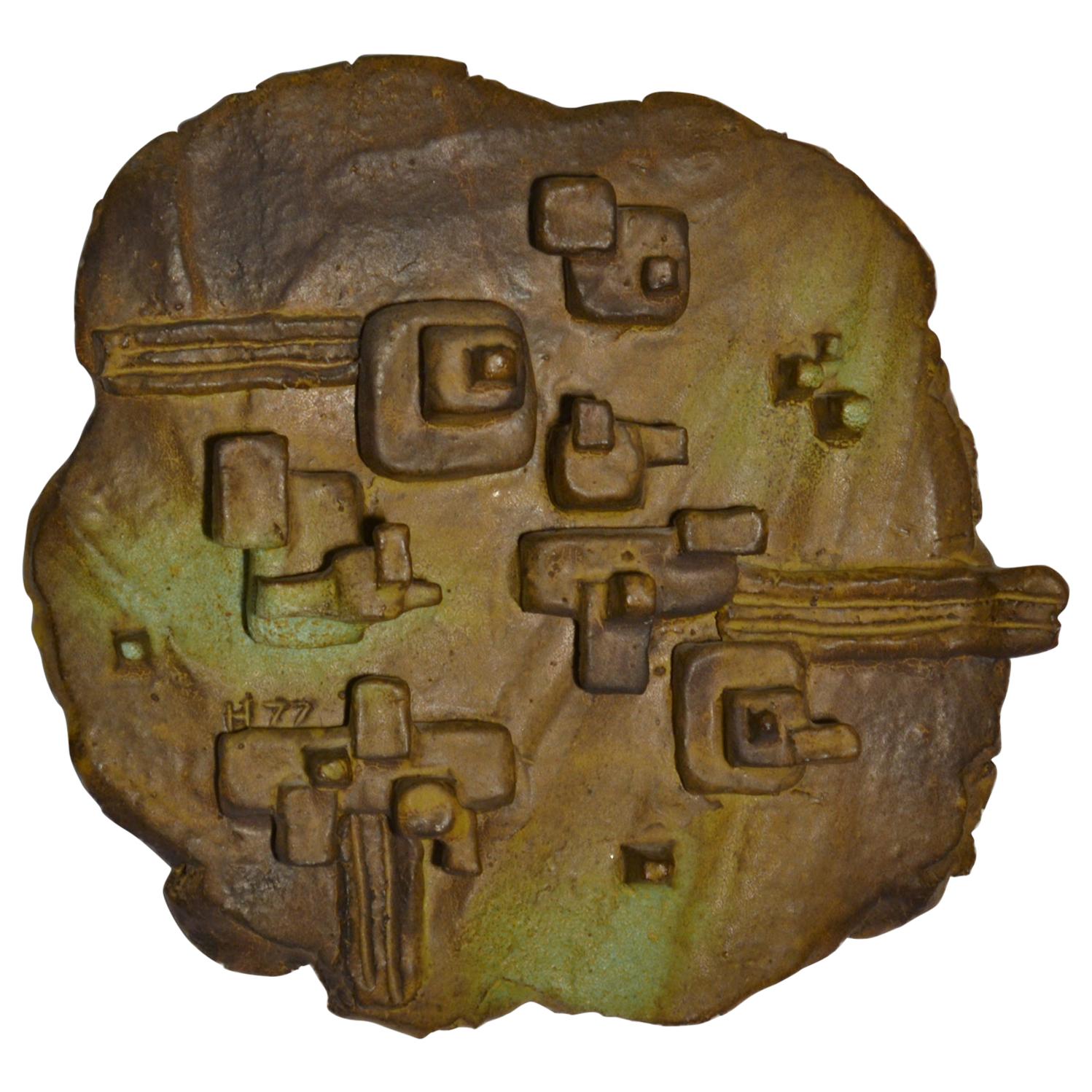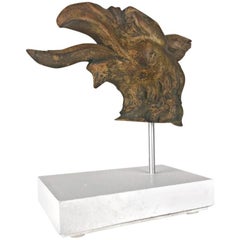
Expressive Relief Fragment of a Mythical Creatures from the Middle Ages
View Similar Items
1 of 6
Expressive Relief Fragment of a Mythical Creatures from the Middle Ages
About the Item
- Dimensions:Height: 4.73 in (12 cm)Width: 2.56 in (6.5 cm)Depth: 7.09 in (18 cm)
- Style:Gothic (Of the Period)
- Materials and Techniques:
- Place of Origin:
- Period:
- Date of Manufacture:1500
- Condition:Wear consistent with age and use. Minor losses.
- Seller Location:Eltville, DE
- Reference Number:1stDibs: LU270838960833
You May Also Like
- Vintage 1996 Mythical Dancing Creature Bronze SculptureLocated in Seguin, TXFull figure bronze sculpture of mythical pig like man creature by Paul Algueseva III (b. 1960) American. Plaque titled Harlequin III When Pigs Fly, ...Category
Late 20th Century American Expressionist Figurative Sculptures
MaterialsBronze
- Dragon "Mythical Beast" Sandstone ReliefLocated in Kastrup, DK400 - 600 Year old charming and artistic sandstone relief. Dragon "mythical beast" which is a symbol of wisdom. From Buddha temple in Arakan, Burma....Category
Antique 16th Century Burmese Other Sculptures and Carvings
MaterialsSandstone
- 15th Century Burgundian Low-Relief Depicting Scenes of the NativityLocated in Saint-Ouen, FRProvenance : In the same private collection for several generations, Burgundy. The canonical Gospels describe briefly the episode of the Nativity. It comprises three parts : • The Preludes : the Journey to Bethlehem, the Census • The Nativity • The Announce to the Shepherds and the Adoration of the Magi Only the Gospel according to Matthew (2, 1-12) speaks about the Adoration of the Magi. Staying vague about their number it does say they brought the newborn gold, incense and myrrh. The apocryphals, the fathers of the Church and many other authors have filled in the gaps of the evangelic tale. The sobriety and symbolic of the story have been a huge inspiration to artists. Although one of the oldest depictions of the Adoration of the Magi dates from the 2nd century the theme became very popular in Christian art during the late 14th century. One of the reasons explaining this success is that it celebrates both the Virgin and Christ at the same time. This important walnut panel is carved in a strong relief and depicts the different steps of the story of Jesus’ birth. On the left, the donkey and ox that have accompanied Mary and Joseph from Bethlehem are depicted behind a trough. On the thatch roof appears the star that would guide the magi to the place of birth of Jesus. Mary is wearing a veil and is seating on a bed. She holds her baby at arm’s length to present him to the magi. Saint Joseph is by her side. The old man is holding a cane in his left hand while from the right hand he seems to uncover himself to greet the visitors. A woman assists to the scene. In front of the holy family the three magi stand behind one another to pay their homage to the newborn. The first magi has a pointed beard. He is already kneeling out of deference and has placed his crown to his feet. He gives the baby a hanap filled with gold coins. This is Melchior as the legend describes him with white hair and a long beard. Caspar, the second magi bears a cup of incense. He is looking at the third magi and with his right hand he points to the star that has guided them there. He has a short beard and wears crakow shoes, breeches and a wide sleeved doublet. Finally Balthazar, the elegant last magi proceeds proudly towards the holy family with his one hand on the saber’s hilt and the other holding a cup. He brings the divine child the myrrh. He probably just dismounted as the horse can be seen behind him. The scene is set in a very detailed and narrative decor. In the right part of the panel the shepherd receive the announce of Jesus’ birth. An angel comes down from heaven with a scroll bearing the good news in his hands. The herding dog sleeps peacefully while sheeps graze. At the top of the cliff we notice the gilded sheeps enclosure. The panel’s moulded frame is carved with a foliated decor. In it’s centre appears a coat-of-arms. It is the alliance of the three magi’s arms. Indeed as it was common for legendary figures the three of them received imaginaries coat-of-arms. Thus, on a field of azure stands a star for Melchior, a crescent for Caspar and a pennon for Balthazar. This high-relief panel is undeniably the work of a very skilled and imaginative artist. This key moment in the New Testament is transposed to a contemporary environment thanks to the figures’ clothing and the rural daily life scene. This way the universal dimension of the episode is highlighted allowing a better understanding for the contemporaries. The sculptor has represented the episodes of the Adoration of the Magi and the Announce to the Shepherd with great talent and numerous details giving life to a picturesque and narrative scene. The important traces of polychromy give those already very animated scenes a stronger pictorial power and a rich dynamism. Because of the picturesque and familiar realism so dear to the artists of the late Medieval era, of the didactic function of this type of panel as well as the quality of the sculpture this piece is an astounding example of Burgundian art of the 15th century. Literature Louis Réau, Iconographie de l’Art chrétien...Category
Antique 15th Century and Earlier French Gothic Figurative Sculptures
MaterialsWalnut
- Elegant Set of Tiles with Mysterious Winged Creature ReliefLocated in Leuven , BEMade of earthenware, this set of tiles (5) depicts a beautiful but mysterious winged creature. Chimera, like and placed on a pedestal, this creature sh...Category
Antique Early 19th Century Belgian Abstract Sculptures
MaterialsEarthenware, Terracotta
$294 Sale Price / set40% Off - Vintage Thai Gilded and Carved Wooden Mythical Creature with Red UndertoneLocated in Yonkers, NYA vintage Thai gilded and carved wooden mythical creature from the mid-20th century, with red undertone. Created in Thailand during the midcentury period, ...Category
Mid-20th Century Thai Animal Sculptures
MaterialsWood
- Pair of French Fragments from the 18th CenturyLocated in Dallas, TXCarved gilt and polychrome finish 18th century French fragments on custom acrylic bases.Category
Antique 18th Century Mounted Objects
MaterialsWood
$3,240 / set

